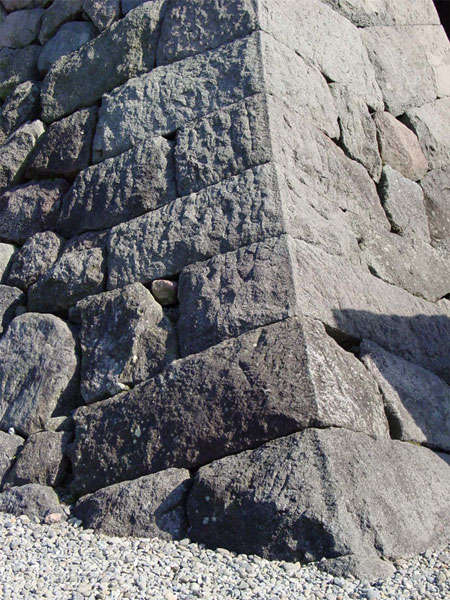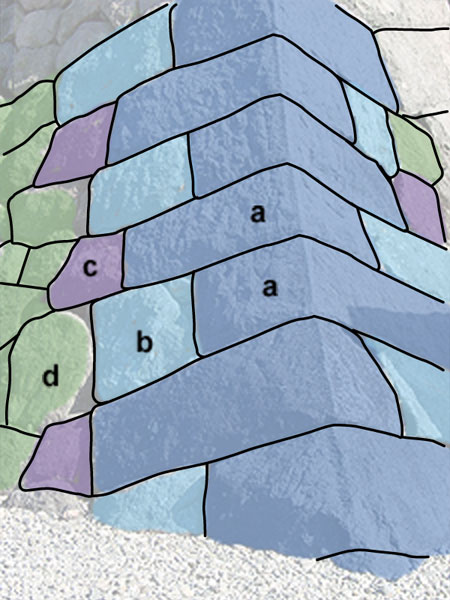| Also
read kado-ishi pΞ. Lit. corner stone. Long rectangularly hewn stones
laid horizontally at the corners of a stone wall *ishigaki
Ξ_. For high stone walls hard stone is used and joined in a zipper pattern
along the ridge at the corner of the wall. The size and number of the corner
stones is determined by the overall height of the stone wall. The corner
base stone is called sumikadobu ne-ishi χpͺΞ; the first corner stone
above that is called ichiban sumi-ishi κΤχΞ; the next stone is niban
sumi-ishi ρΤχΞand the next is sanban sumi-ishi OΤχΞ. The
sumi-ishi is the main component of a corner stone grouping, along
with *sumijiri-ishi
χKΞ, corner tail stones, and sumiwaki-ishi χeΞ, corner side stones.
Such corner stone groupings are termed sangizumi ZΨΟ, seirouzumi
δOΟ, or iketazumi δ
Ο. The way the stones are laid fuseyou
Ήl in these corner groupings is categorized as formal shin ^, less
formal gyou s, and informal sou . For example, a formal sumi-ishi
grouping is comprised of one corner stone joined with two or three corner
side stones, carefully hewn and fitted in a row. The corner stone grouping
supports the stone wall, so the size, number and placement of the sumi-ishi
and other stones is carefully calculated, a process called ishigumi ishibakari
ΞgΞ}θ. See the drawing for the names of the various components of the corner
of a stone wall. Contrast sumi-ishi with flat stones *hira-ishi
½Ξ, the other main type of stone used for stone facing. |




